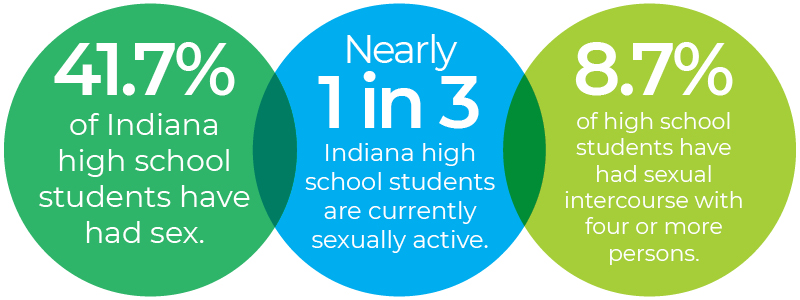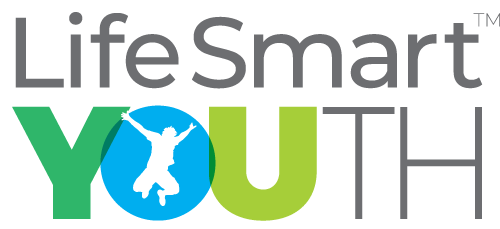You Can’t Prevent Something You Don’t Understand

Is there anything more awkward or embarrassing than talking to your kids about sex? You’re not alone—most parents feel this way. But because there are so many physical and emotional risks involved when teenagers have sex, it’s important to engage your kids in open, informed, nonjudgmental conversations. These conversations can, and probably should, focus on reasons why waiting to have sex is a good idea. They may roll their eyes at you, but you have a better chance at keeping them healthy and safe.
“This program was very effective and I think had a positive impact on everyone.”
Rights, Respect, Responsibility (3Rs) ®
Rights, Respect, Responsibility® (3Rs) is an evidence-informed curriculum that provides middle school and high school students with the knowledge, confidence, and skills necessary to avoid teen pregnancy and the spread of sexually transmitted diseases (STDs), while stressing the importance of respect for self and others. In direct alignment with the National Sexuality Education Standards and National Health Education Standards as a proven, evidence-informed curriculum, 3Rs is a five-session program that is medically accurate, age-appropriate, and free of social biases. 3Rs fosters responsibility by respecting young people’s rights to honest sexuality education.
What Students Learn:
Session 1
Change is Good!
By the end of this lesson, students will be able to:
- Name at least one physical, social, cognitive, and emotional change young people go through during adolescence.
- Identify at least two websites that contain additional medically accurate information about puberty and adolescence for young people their age.
National Sexuality Education Standards Alignments:
- Describe the physical, social, cognitive, and emotional changes of adolescence.
- Identify medically accurate sources of information about puberty, adolescent development and sexuality.
Session 2
Reproduction Basics
By the end of this lesson, students will be able to:
- Describe the process of human reproduction by identifying the correct order of the steps involved with conception.
- Define sexual intercourse.
- Define sexual abstinence as it relates to pregnancy prevention.
National Sexuality Education Standards Alignments:
- Define sexual intercourse and its relationship to human reproduction.
- Define sexual abstinence as it relates to pregnancy prevention.
Session 3
Birth Control Basics
By the end of this lesson, students will be able to:
- Describe the impact of correct and consistent use of a birth control method on how effective it is at preventing pregnancy.
- Correctly recall that there is generally a gap between when a person may start to have vaginal sex and when they may wish to get pregnant, which makes using effective birth control important.
- State correctly what emergency contraception is.
National Sexuality Education Standards Alignments:
- Explain the health benefits, risks, and effectiveness rates of various methods of contraception, including abstinence and condoms.
- Define emergency contraception and its use.
- Identify medically accurate information about emergency contraception.
Session 4
Protecting Your Health: Understanding and Preventing STDs
By the end of this lesson, students will be able to:
- Define STDs and HIV.
- Name at least three common STDs and how they are transmitted.
- Compare sexual behaviors that put people at high, low, or no risk for STDs.
National Sexuality Education Standards Alignments:
- Define STDs, including HIV, and how they are and are not transmitted.
- Compare and contrast behaviors, including abstinence, to determine the potential risk of STD/HIV transmission from each other.
- Describe the signs, symptoms, and potential impacts of STDs, including HIV.
Session 5
We Need to Talk
By the end of this lesson, students will be able to:
- Name at least two characteristics of effective listening.
- Name at least two characteristics of effective communication.
- Demonstrate proficiency with using effective listening and communication skills in scenarios relating to sexual decision-making and safer sex.
National Sexuality Education Standards Alignments:
- Demonstrate the use of effective communications skills to reduce or eliminate risk for STDs, including HIV.
- Demonstrate the use of effective communication and negotiation skills about the use of contraception, including abstinence and condoms.
Indiana law (IC 20-10.1-4-11) states, “when sexuality education is taught, abstinence from sexual activity outside of marriage must be stressed. Instruction must teach that abstinence outside of marriage and a mutually monogamous relationship inside of marriage are the best ways to avoid out-of-wedlock pregnancy, sexually transmitted diseases, and other associated health problems.” LifeSmart Youth adheres to Indiana’s legal requirements in our abstinence-based programs. We also utilize the medically accurate definition of abstinence as “not engaging in vaginal, oral, or anal sex.”
In accordance with Indiana law SB65, parents of the youth served by LifeSmart Youth are provided Opt In consent forms for the Human Growth & Development and 3Rs programs.
This program requires a five-session commitment. Sessions can be combined to fit block scheduling. For more information or to schedule a program, contact us at (317) 667-0340 or info@lifesmartyouth.org.
